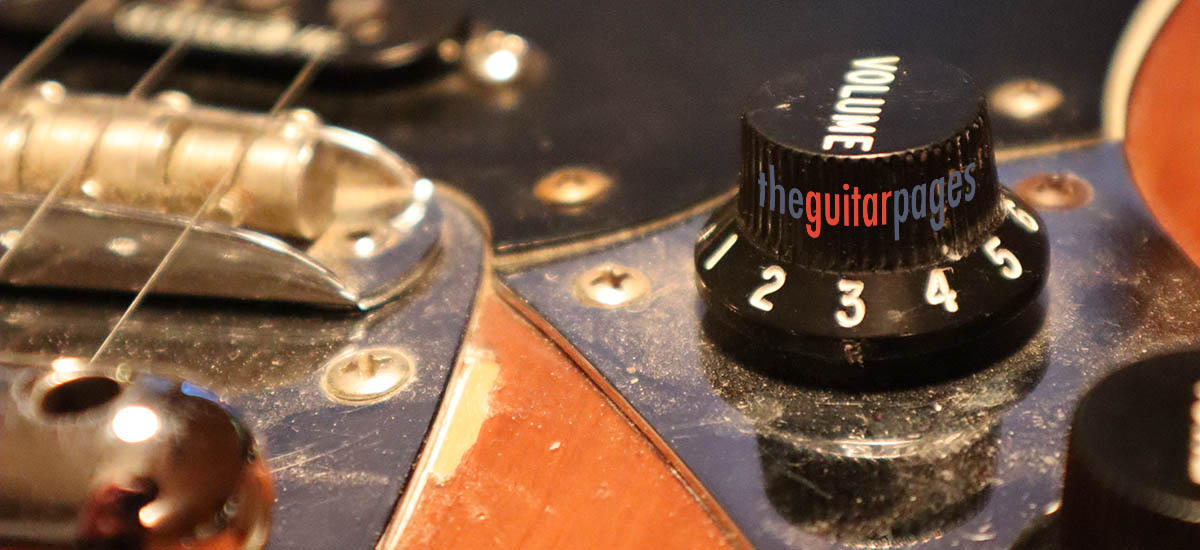There are now thousands upon thousands of crazy effects pedals that will take your tone from bland to wobbly, warbley, bendy, gainy and or grainy. The onslaught of small scale effects builders and DIY home building kits has helped capture the imagination of guitarists of all genres. While effects pedals are an excellent way to unlock some strange creatures that inhabit your guitar, one of the most versatile effects is built right onto every single electric guitar. This one effect to rule them all, is the volume knob.
The dynamic relationship between a guitar and the amp it’s plugged into is often overlooked by younger, less experienced players. Try this out: plug into your amp and turn it up until you start getting some saturation in the tone. In fact, turn it up to the point where you’re a bit uncomfortable. Ok, now roll the volume knob on your guitar back to a point where the tone cleans up again.
Ahh here we are right in the sweet spot.
But can’t we get that same tone by running our amp quieter and having the guitar turned up? Sure, I mean well sort of. There are a couple advantages to an amp that is cranked. First of all, the front gain stages of the amplifier aren’t limiting what continues on to the rest of the amp’s circuit.
The amp is bringing in the guitar signal, amplifying it, and sending that larger signal on to other gain stages, tone stacks, effects like reverb, then on to the power section. If the guitar is giving 100% into a gain stage that is limiting the overall volume, you’ll find that the overall tone lacks a sort of harmonic richness.
Why is that? And what is this harmonic richness I’m talking about?
One of the advantages of tubes amplifying a signal is that there are additional harmonics developed during the amplification stage. This means that if the amp is turned up higher, the tube is generating 2nd, 3rd, and some 4th order harmonics. These additional tones generated based on the input tone work to fatten up the original input from the guitar. The harder the tube is working, the more additional harmonic content we get, and the fuller our sound is. [1]
Note: This article is primarily talking about a guitar running into a tube amp. Some of the new modeling amplifiers are getting incredibly good at replicating the harmonic content that overdriven tubes provide. This is to say that your mileage may vary. If your setup doesn’t sound like Jeff Beck’s at the end of the day, then consider getting a Marshall stack. Also it’ll be hard to sound just like him because as much as we can dream, none of us are.
So by running the amp hotter, and rolling the volume back on the guitar, we can achieve a cleaner tone while also capitalizing on the additional harmonic content added by our amp.
There is another advantage to a setup like this. As soon as you want a little more gain, breakup, or lead tone to push your solo ripping through the rest of the band, just tweak that volume knob up a bit and voila. The additional signal from the guitar drives the front end of the amp harder resulting in a gainier, more saturated tone. Of course as we drive the amp harder with the guitar, we get the additional plus sides of the tonal artifacts our amp imparts on the overall tone.
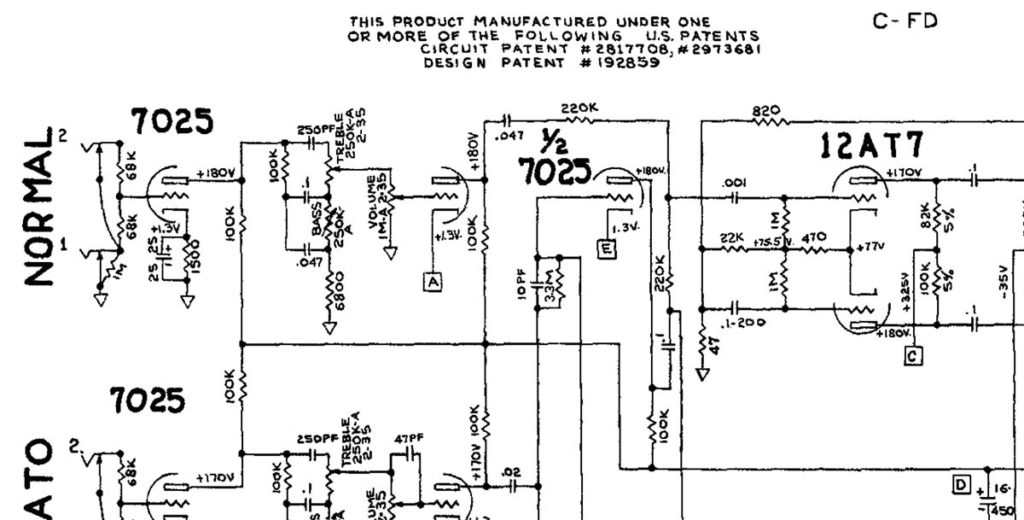
Before we go any further, let’s explore some of the artists who are known for using this technique. And while most professional musicians can be seen frequently, and expertly, rolling the volume knob to suit their sonic needs, there are a couple guitarists who do this exceptionally well.
Artists Who Use the Volume Knob Extensively
Jeff Beck
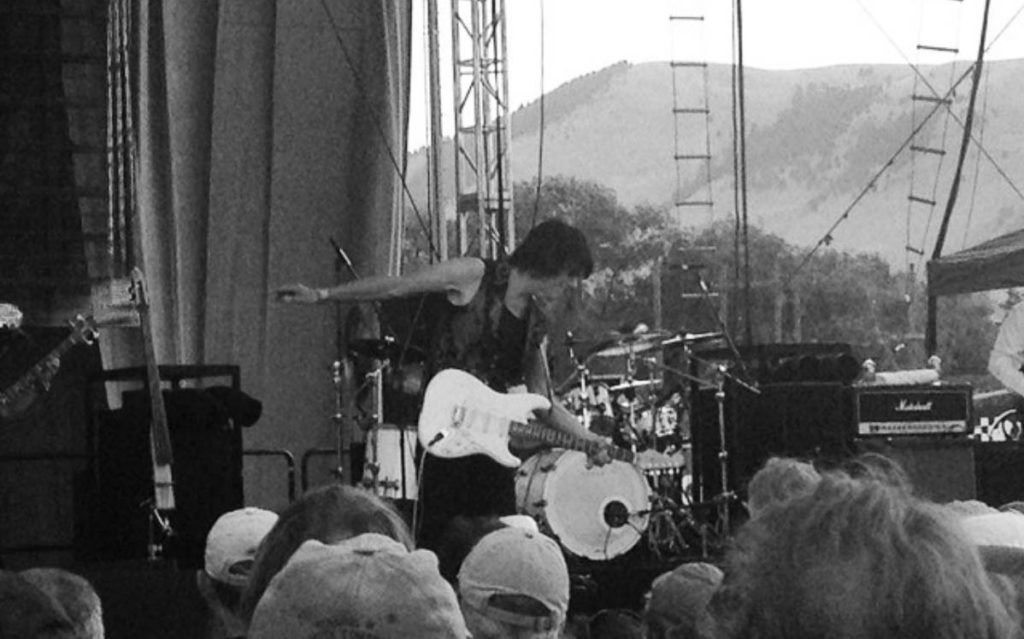
Jeff Beck is the first person I saw using this technique and the whole thing took me by surprise. His masterful manipulation of the tone knob to clean up his tone with his amp humming up a storm in the background made his clean tones incredibly sweet, and provided dirt when he wanted to dig in a little bit harder.
Jeff Beck also has a minimal setup which highlights these subtle techniques. His rig basically consists of his Strat into a wah-wah pedal, into a Marshall 50 watt head. There’s not a lot tonally that a rig like that can provide in terms of quick switches. By this forced simplicity, he has to take advantage of that tone knob in order to get the sound he wants, and provide such a rich sounding performance.
Take a listen to Jeff Beck’s album Blow by Blow for some incredible guitar tones that are sitting right on that perfect edge of clean and broken up, searing lead tone.
Brian May
While Brian May, the one of a kind guitar player for Queen, has a unique approach to his guitar parts and equipment, he’s no stranger to the loud amp setup. Check out this Rig Rundown from Premier Guitar where his guitar tech discusses his use of volume on the guitar.
I mentioned unique. Well one of the ways that he embodies unique is his use of a sixpence coin as a pick instead of well, a normal pick. This gives him a very specific tone aided most obviously by his handmade guitar made from spare parts found around his house.
Using a coin as a pick requires an incredibly light touch with the right hand. This also requires the amp to be turned up and the overall volume controlled more specifically with the guitar’s volume knob.
I love that exchange.
“And that’s volume.”
“Does he play with that throughout the night?”
Exasperated. “Oh god yeah, that’s how he controls everything. Without pedals that’s how he makes it clean or he makes it really distorted.”
Derek Trucks
Derek Trucks is by far one of my favorite guitar players. His ability to handle his rig with such precision becomes obvious listening to his soaring slide solos.
Watch him in this video play a solo. He’s constantly making tiny adjustments to the volume of his guitar. What’s so incredibly about his playing is how seamlessly he’s able to go between clean, glassy tones to searing lead. He does this in two different ways. First by adjusting the volume knob and making slight changes to keep the tone where he wants it. The second, is adjusting his attack both with the slide and with his right hand. The harder he digs in, the amp is able to respond immediately.
Derek Trucks, and these other artists are able to play like this, taking advantage of the huge impact the guitar’s volume knob plays on the tone. If you’re a guitar player who is starting out, try playing around with volume settings on the guitar with the amp turned up a little bit louder and see how that changes the way you play. You might pick up some great tricks that will elevate your guitar playing.
The Guitar Volume Sweet Spot
I think Derek Trucks has the most obvious example of this tone. It is the perfect point, right on the fence, between rich clean and hot saturation. Going from one to another can be the result of either rolling the guitar’s tone knob back or forward a tiny bit, or it is controlled with the touch.
One that you’ll notice is that professional guitar players are incredibly good at squeezing the right tone out of their instrument. This typically comes from a dynamic touch on the instrument, both on the fretting and plucking hand, which results in a range of outputs that less advanced players struggle to achieve.
Try finding that sweet spot. Open up the amp a bit (crank it!) and then roll your guitar’s tone back until it cleans up with soft strumming. Make minor tweaks until you feel like you’re holding a dragon on a leash. You want to be able to unleash it, or tame it depending on your needs.
Volume Knob Technique
Depending on the type of guitar you’re playing, you can sometimes manipulate the volume knob while you’re playing. There is a common technique called violining which is when you pluck a note with your strumming hand and roll the volume knob on and off with the same hand. This is most typically done with a Strat and using the pinky for this control manipulation.
It takes quite a bit of practice to get this technique to sound right, so try it out and don’t get too frustrated if it’s real choppy at first. Keep playing around with this and see if you can incorporate this trick into your playing. If you need some inspiration go check out some Jeff Beck videos on YouTube. This guy is the master of that technique.
What is Behind That Volume Knob
Let’s get a bit more technical. The volume knob of our guitars is a pot (short for potentiometer), which is a variable resistor. The knob changes the resistance to the signal from some resistance to all of the resistance. Meaning that when the volume knob is on zero, all of the signal from the pickup is being grounded out, or “bleeding to ground”.
But wait, so when the volume knob is turned all the way up it still is bleeding some of my pickup to ground!? What gives?
Yes that is absolutely what’s happening, but let’s take a closer look to understand why we might want that. When a signal has an opportunity to either ground out, or continue on it will take the path of least resistance. So if you have a high value resistor between the signal and ground, the signal will continue on to the amp because it has less resistance that direction. Well, most of the signal. See, high frequencies have an easier time getting to ground than the rest of the frequency range. This means that some of our overall tone actually will take that high resistance path to ground. And those frequencies are the high ones.
The most common values for volume pots are 250k and 500k ohms. A higher value puts less load on the pickup output and therefore less treble bleeds to ground through the pot. This is best illustrated by Strats with naturally more trebly single coil pickups using 250k pots which will bleed more treble to ground than a 500k pot that is used in a Les Paul with humbuckers. The humbuckers are a darker pickup and therefore we want to retain as much of the high end as we can, thus the higher pot value.
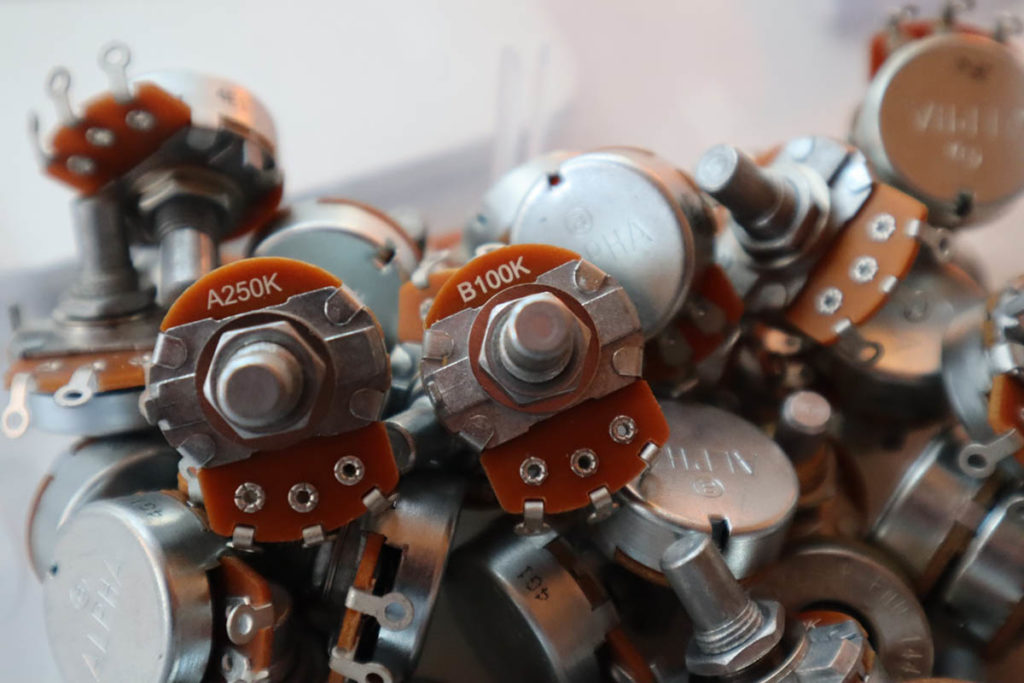
Difference Between Audio Taper and Linear Taper Potentiometers
There are two main types of pots out there, Linear taper and Audio taper. If you’re looking at the back of the pot, an audio taper will typically by marked with an “A” and a linear taper will typically be marked with a “B”.
Fender uses audio taper pots in their guitars for both volume and tone controls. Gibson uses linear taper pots for both audio and tone controls. And some manufacturers will use a combination such as audio taper for volume and linear taper for tone. So what’s the difference and why would different companies use different configurations?
Like most everything in the guitar and music world, style of pots really comes down to personal preference.
Linear taper, not surprisingly, varies resistance from 0 ohms to the value of the pot evenly. This means that if you’re using a 500k pot and position the control at 50% the pot will have a resistance of 250k.
There’s a problem with this however. The human ear doesn’t hear volume in a linear fashion. In fact, the ear and most other human senses work in a logarithmic fashion. Check out this page from audiocheck.net for some great examples that show both frequency and volume with comparisons for linear and logarithmic increases. So the taper of the audio taper pot is meant to better match our ears’ interpretation of volume change.
Typically, a linear pot will have a larger cutoff right around 7 (on the 1 – 10 scale). While an audio taper pot will have a much smoother transition in value. Though the values of resistance aren’t changing smoothly, our ear hears it that way.
However, Gibson does this for a reason, and many people like the touch sensitivity that linear pots give them. If you don’t like the feel of your guitar’s controls, try swapping out the pots for the other style and give that a go.
Volume Pedals
A great alternative to using the guitar’s controls is a volume pedal. Volume pedals can be extremely useful and versatile tools for the guitar player. Stick this at the beginning of your pedal board (right after the guitar), and not only have a great tool for volume effects, but also a way to silence the cable allowing for guitar changes and silent tuning.
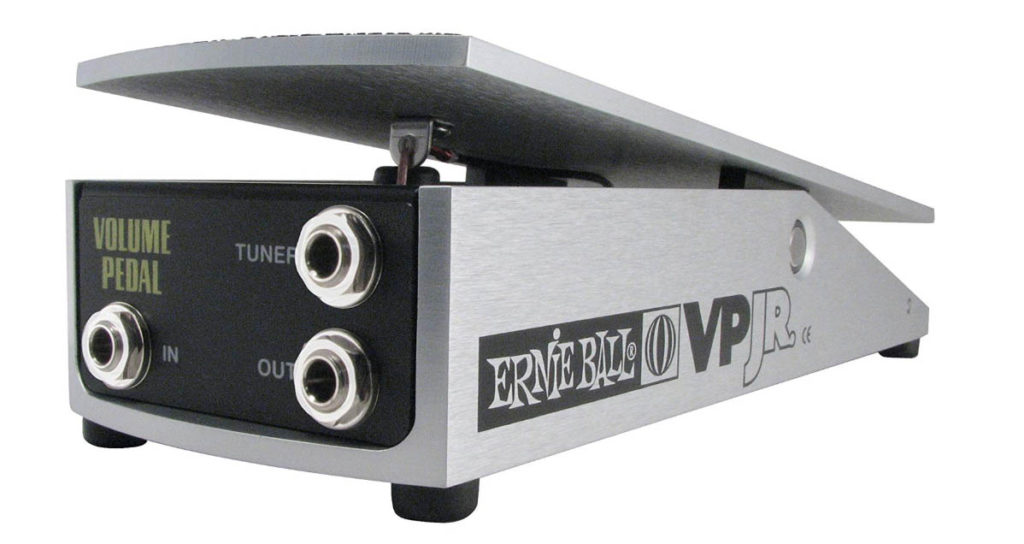
Ernie Ball Volume Pedal, Amazon
While you can manage the violin effect if you’ve got a guitar with the volume knob in reach (and your pinky is long enough), a volume pedal makes some of these effects possible without contorting that pinky finger.
There are a bunch of volume pedal review videos out there and boy do they make volume pedals look boring. Don’t think of them as just a utility though, again listen to Jeff Beck’s amazing volume control work on Blow by Blow and you’ll quickly see how expressive volume swells can be for your guitar playing.
Amp Volume Vs. Guitar Volume
Earlier in this article I recommended setting your amp volume a little louder than you want your lead guitar parts, then back the guitar’s volume off until it’s at a comfortable level. This typically will give you a nice clean for rhythm playing and a strong, soaring tone for lead playing. This is my favorite place to be in if you’re playing live or practicing with a band. However, what if you’re practicing at home and looking for bedroom levels.
This answer depends on your amp and how much extra hum it produces. Some tube amps, or even certain models in a modeling amp will hum quite loud when turned up even if the guitar’s volume is at 0. While this could indicate some other issue such as dirty (or non-existent) ground in your home’s power, it makes more sense to turn your amp down to a comfortable level where the hum of the amplifier won’t drive you crazy.
In certain environments, like playing with a band, a bit of amp hum isn’t a big deal. The overall volume makes up for the extra noise. However, if you’re playing in a quieter setting that noise won’t just drive you crazy, but will make everyone else want to strangle you and kick a hole through the amp’s speaker.
Clean configuration:
In general if you’re looking for a clean guitar tone than you’ll want a higher amp volume and a lower guitar volume.
Dirty configuration:
If you’re looking for a distorted sound, make sure your guitar is turned up all the way so that your distortion pedals or amp will be able to get as much signal as possible for the distortion effect to be strongest.
Remember that the amplifier can only do so much to take the tiny signal that comes out of the guitar and turn that into a much larger signal that comes out of the amp’s speaker. Broadly speaking, send in a small signal and you’ll get a weaker, smaller output than if you sent in a full strong signal. Of course in the range of the few volts that come out of a guitar, there exists a wide range of variation in the final tone that is produced.
The above examples give some very rough guidelines for volumes on the amp and the guitar, but remember that the relationship between the guitar and amp is always changing. Change the settings on the guitar and that will influence the amp, change the amp and that will change the way the guitar sounds. Any change to the configuration of either will affect the performance of the other.
Tech Tip: Removing Guitar Knobs
You may find that you want to remove the plastic (or metal) volume or tone knob to either clean under it, or remove the pot all together. First of all, get the right tools for the job. Control knobs are generally pretty difficult to get off of the pot shaft and can easily be damaged.
First, determine if the knobs have a set-screw or not. If they do, just loosen the screw with a small screwdriver and the knob will probably slip right off.
If there is no set screw that most likely means that the knob is held onto the pot shaft by friction and will need to be pried off. Don’t use a pair of pliers to yank on the knob, you will damage it. Music Nomad has a great little level tool with a felted bottom so you don’t damage the knob or the surface of your guitar. Just slowly add pressure to the lever until the knob pops off.
These knobs that are held onto the pot shaft through friction require what is called a split shaft pot. This is because the pot’s shaft is split in half and can be bent in or out slightly to adjust the fit of the knob. If the knobs were on the pots super hard, squeeze the shaft together so it goes on easier. A tiny bit of dry soap can help the knob slide on as well, just don’t use too much and clog the hole.
And whatever you do, don’t try to put a knob with a set screw on a split shaft pot. That will not work, I promise. You’ll ruin the pot’s shaft and the knob will never sit flush on the guitar body.
Conclusion
The volume knob of a guitar is incredibly versatile and an easy way to change the feel, tone, and vibe of your overall sound. Play around with different settings and experiment with what feels best for your style of playing.
